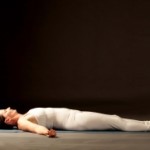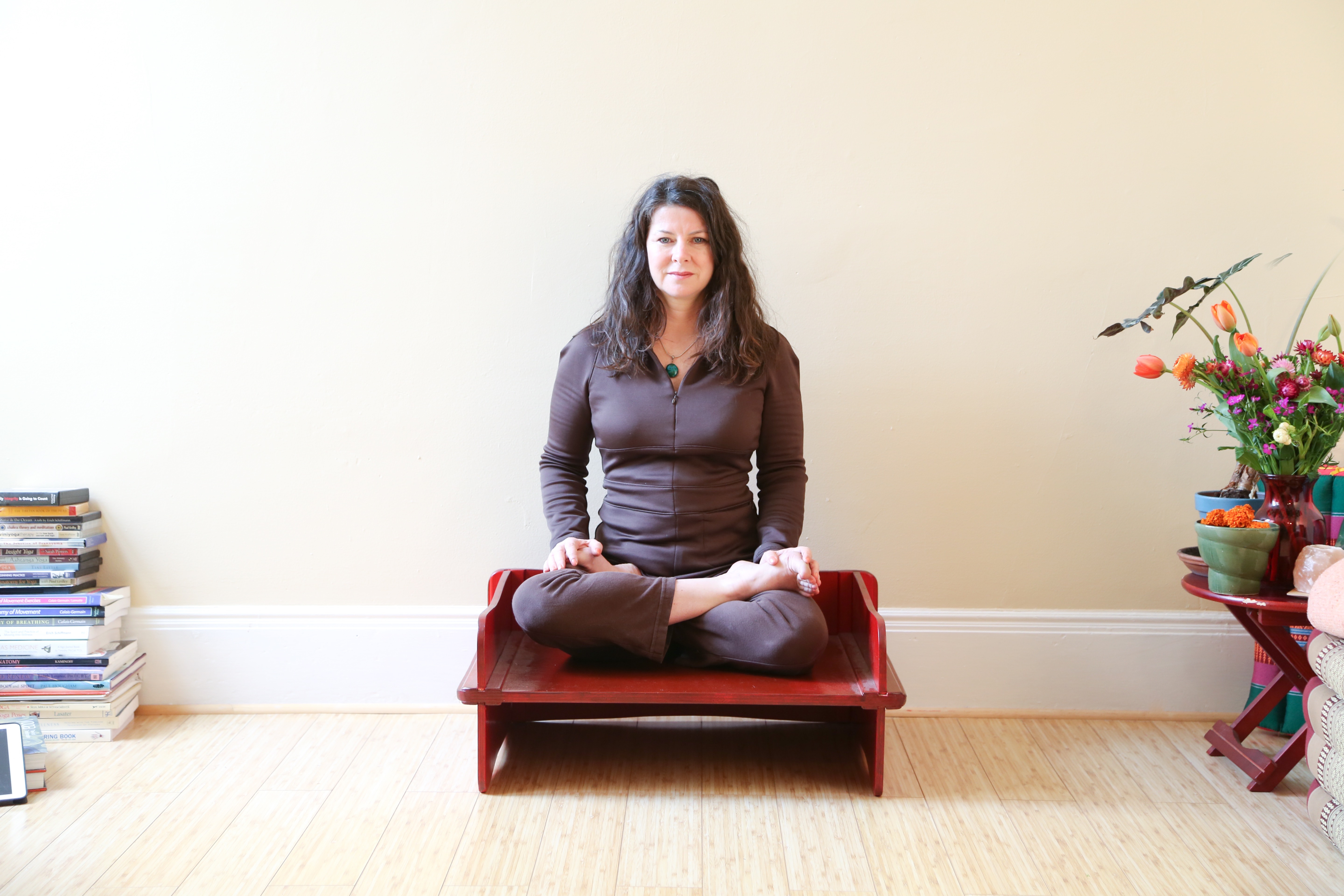 What does the practice of Yoga Nidra look like?
What does the practice of Yoga Nidra look like?
Yoga Nidra is usually practiced in a supine position (on the back) for at least 20 minutes. The head might be supported by a cushion. The practitioner might appear to be sleeping.
The only physical challenge to the practice might be getting the body comfortable enough to not be a distraction. Perhaps it can be considered advanced in that it requires physical stillness, the ability to follow the words of the person guiding while looking inward with eyes closed.
However, someone who is not physically fit or never done any form of yoga can do Yoga Nidra. Even those who have no meditation practice or experience following guided visualizations can practice it on their first try. The only people I’ve ever known to have any kind of negative experience were unable to lie still due to emotional trauma, or a physical injury. I have heard that practitioners who encounter barriers to the practice on the outset, such as veterans with PTSD or someone with serious back pain, end up being some of the most devoted and skillful in the long run.
What does the name mean and what tradition does it arise from?
“Yoga Nidra” is usually translated as “Sleep of the Yogi” or “Yogic Sleeping” or even “Sleep with Yogis.” Or, since Yoga Means “union, ” it can also be translated as “Union with Sleep.” It is a Tantric practice– a meditation on the body involving the mind as a part of body, but also the senses. Throughout, we are aware of our body, thoughts, feelings and senses. We aren’t trying to transcend the body or any part of the physical experience.
In fact all four of the elements (body, mind, emotions and senses) unify into one element and lead us into a deeper state of conscious rest. The body is the temple, the container for the experience. Our conscious mind, while still present, plays a quieter role for a change. The subconscious emerges and begins to reveal a very natural form of wisdom, perhaps a more original and primordial one. However, this is not a mythical journey or anything like Jungian or psychoanalysis. We see the roots of our desires and motivations right in our own familiar experience, without consulting anyone else or seeking anything outside of ourselves.
Why practice Yoga Nidra?
All the same reasons that bring us to yoga- physical, psychological, emotional, spiritual- lead us to Yoga Nidra. I think of it as a potent distillation of all the best of yoga: one drop goes a long way. Studies have found that 1 hour of Yoga Nidra (once the practitioner understands how to practice) = 4 hours of regular sleep.
We practice postures to make the body stronger, more flexible, more accessible for our needs. We practice Yoga Nidra to make the subconscious stronger, flexible and more accessible as well. It achieves a lot of the same effects as talk therapy without the talking. In my experience Yoga Nidra is way faster and leaves me with a more reconciled feeling.
I would go so far to say that it is an experiential science of letting go of tension that is way beyond just going to bed. During our most challenging struggles we often cannot wait to drop into bed, throw the blankets over our heads and and conk out. With our tensions still upon us, they flail in our subconscious mind creating nightmares or restless, sporadic sleep. The result is waking exhausted the next morning.
Yoga Nidra provides a method for releasing tension, including tension we are entirely unaware of. ALso good news is that the practice doesn’t necessarily involve focusing on the tension itself. Furthermore, once we learn to move around in our subconscious terrain and develop a sense of how to abide there, we can begin to find ways to shape this experience and work out our issues right at their roots, wordlessly, in our own intimate domain.
Here’s a bullet list of benefits:
- Deep relaxation during and afterwords
- Cultivation of a more positive mindset
- Improved sleep
- More clarity during active life
- Ability to learn faster
- Helps alleviate diseases associated with stress such as depression, hypertension, asthma and digestive disorders.
→ Did you like this post? Sign up below to get updates and other good stuff from me- about once a month. (For free.)

